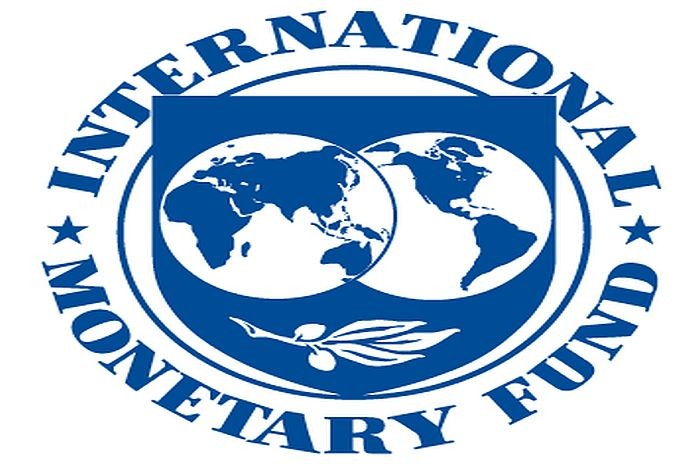USA / ANTIGUA – On November 30, 2022, the Executive board of the International Monetary Fund (IMF) concluded the Article IV consultation with Antigua and Barbuda and endorsed the staff appraisal without a meeting on a lapse-of-time basis. Antigua and Barbuda’s economy is on a gradual recovery path, following a sharp contraction in real output of 20 percent in 2020 due to the COVID-19 pandemic.
Growth is estimated at 5¼ percent in 2021, driven by a rebound in tourism and construction activity. Despite the surge in international energy prices, inflation was subdued in 2021 due to price controls on utilities, fuels, and public transportation. The fiscal position improved in 2021 with a narrowing of the primary deficit as pandemic-related spending was wound down and better tax administration and higher external grants bolstered revenues.
The growth momentum is expected to carry into 2022 and 2023, with real GDP projected to expand by 6 and 5½ percent respectively, supported by strong tourist arrivals, foreign direct investment in the hospitality sector, and public sector projects.
However, output will return to pre-pandemic levels only by 2025 due to scarring effects of the pandemic. Inflation is forecasted to accelerate to 8½ percent in 2022, reflecting the pass-through from higher global food and fuel prices, before moderating to 4½ percent in 2023. To cushion the impact of rising living costs on the vulnerable, the government introduced targeted subsidies to the transport and fishing sectors to keep public transportation fares and seafood prices stable and removed taxes on flour to contain the rise in bread prices.
Continued fiscal consolidation efforts and the growth recovery have helped improve the fiscal position, but outturns underperformed the targets envisaged in the government’s medium-term fiscal strategy, while gross financing needs and arrears to domestic and external creditors remain high.
Public debt peaked at 102 percent of GDP and is projected to decline to 91 percent of GDP in 2022. The financial system remains stable, but bank credit to the private sector is weak. Risks to the outlook are tilted to the downside, primarily from further commodity price shocks, a global growth slowdown, a resurgence of COVID, and tighter global financial conditions.
Executive board assessment
Antigua and Barbuda’s economy is recovering but facing headwinds from multiple external shocks. The rebound is supported by tourism and construction activity, but output is expected to return gradually to pre-pandemic levels by 2025 reflecting scarring effects from the pandemic. Higher food and fuel prices are driving up inflation, eroding real incomes, and exacerbating fiscal and external imbalances. The external position in 2021 was weaker than the level implied by medium-term fundamentals and desirable policies. The outlook is subject to large downside risks, including further commodity price shocks, a global growth slowdown, tighter global financial conditions, lower Citizenship-by-Investment Program (CIP) revenues, and natural disasters.
Near-term fiscal policy should continue to focus on protecting the vulnerable against rising living costs. It will be important to implement a clear framework for coordination between different government entities responsible for social safety net programs to ensure efficient targeting and monitoring. Sufficient resources should be allocated towards the completion and maintenance of the centralized beneficiary registry. An automatic fuel pricing mechanism, with full pass-through of international prices, should be put in place in conjunction with targeted social protection programs, allowing the government to move away from generalized, untargeted subsidies.
Fiscal consolidation is under way, but additional revenue mobilization is needed to achieve the targets of the Medium-Term Fiscal Strategy. Achieving the original primary balance targets will require limiting tax exemptions, introducing new tax measures, and containing the wage bill. A public sector employment census and skills database will be essential as part of a longer-term strategy to address the wage bill.
Securing long-term financing and preventing the accumulation of new arrears are critical in an environment of tight financial conditions. The authorities should maintain efforts to extend the maturity profile of their debt in the domestic and external markets in order to reduce rollover risks. There should be close engagement with creditors to put in place feasible strategies for clearing remaining arrears and new arrears should be avoided.
Sustained progress on structural fiscal reforms would better institutionalize fiscal discipline. To build political consensus, the MTFS and Fiscal Resilience Guidelines could be legislated by parliament. The authorities should move ahead with the operationalization of the Climate Resilience and Development Fund, Fiscal Resilience Oversight Committee, and single window system at customs. E-filing and e-payment of taxes should be put in place and the amended Finance Administration Act and Procurement Administration Act should be implemented. A performance report card system for SOEs should be introduced. A public financial management action plan should be developed based on the results of the recent public expenditure and financial accountability self-assessment.
Further reforms are necessary to ensure the pension system’s long-term sustainability. These include gradual increases in the contribution rate and automatic adjustments to the retirement age in line with the increase in life expectancy at retirement. Furthermore, a revamped investment strategy will help address liquidity constraints and increase longer-term returns.
Continued efforts to safeguard financial stability and strengthen AML/CFT and CIP frameworks are essential. Asset quality and provisioning buffers of financial institutions should be monitored closely. A national crisis management plan should be formulated in collaboration with the ECCB to address potential risks to the financial system. Ongoing initiatives to strengthen the AML/CFT and CIP frameworks would help protect correspondent banking relationships and strengthen the integrity of the CIP.
Improving access to credit and strengthening the workings of the labor market would support the economic recovery. It will be important to increase the role of the regional credit bureau and partial credit guarantee scheme in enhancing credit quality, accelerating the lending process, and alleviating collateral constraints of borrowers. The insolvency law should be modernized to help incentivize lending. Labor market policies should emphasize training, vocational education, and skills certification, together with job search assistance to reintegrate workers into the labor force.
Building resilience to climate shocks and accelerating the transition to renewables will boost long-term competitiveness. The government’s efforts to leverage donor resources and other international financing for climate resilience projects are crucial given the large investment needs and limited fiscal space. Shifting to renewables, supported by private sector financing, would reduce energy costs and improve competitiveness.





